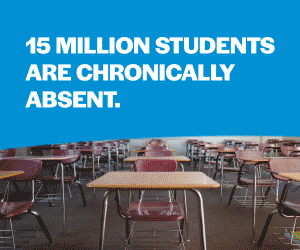
After reports that Chicago Public Schools might need to close up to 100 schools, its board voted in September to impose a moratorium on any such discussion until at least 2027. With that decision, Chicago became the most extreme and high-profile example of a district ignoring its underenrolled schools.
But it’s not just Chicago. Over the last decade, districts have closed fewer and fewer schools. As of 2021-22, the most recent year for which national data is available, districts closed 666 schools — the lowest number in more than 20 years. (Charter school closures are also at historically low levels.)
In many cases, closing neighborhood schools is disruptive for students and communities, and deciding which to shutter tears neighborhoods apart. So the decline in shutdowns might seem like a positive trend. If school closures are bad for students, it’s a good thing that fewer kids are displaced, right?
Not necessarily. For one thing, districts may have simply delayed the inevitable, because student headcounts have been falling. Public school enrollments fell by 1.2 million children in the wake of the pandemic, and thousands of schools nationwide suffered declines of 20% or more.
Worse, the most recent official projections suggest enrollments will fall another 5% by 2031 — and those don’t take into account any reductions in immigration during the next Trump administration.
Too many district leaders closed their eyes to financial reality and hoped for societywide population trends to suddenly reverse. But there are signs they may be starting to grapple with the harsh budget truth. Denver tried to close schools two years ago and backed down, but is trying again this year. Los Angeles; San Francisco; Seattle; Milwaukee; Fort Worth, Texas; and Fulton County, Georgia, are all in the midst of painful deliberations about school closures. The Alum Rock district outside San Jose, California, is considering closing or consolidating nearly half of its schools.
It is precisely because school closure decisions are disruptive that districts should have acted when times were good. Making these decisions under real financial duress constrains their choices and potentially exacerbates the negative effects. For example, Philadelphia overwhelmed its school system when it was forced into a massive wave of closures a decade ago, ultimately shuttering 10% of its schools over two years. Achievement fell further, for both the displaced students and their new peers, as the number of students affected grew.
But the effects of school closures largely depend on what happens to the affected students. And as EdNavigator’s Tim Daly wrote last year, there are no-cost ways for districts to mitigate the downsides. For example, they could ensure that any displaced student has access to a school that is better than the shuttered one —not just the closest. Money can also help, in the form of counselors and other types of navigators who can help kids with the transition.
Of course, selecting which schools to close is no easy task. When I looked at this question recently for a large urban district in the South, I found there was a Venn diagram that found quite a bit of overlap among schools that were small and expensive, that were losing students, and that were getting poor academic results.
Consider the table below, with three real but anonymized schools. The school I call Washington could be a likely candidate for closure. It is serving 40% fewer students than it did pre-pandemic, which has driven its per-pupil cost far above the district average of about $14,000. The state has also given it a “D” rating for academic performance.
But the district wouldn’t want to blindly follow the enrollment and cost trends, or else it might close a school like Adams, which sports an “A” rating from the state. On the other end, the Jefferson school is comparatively cheap to operate, and its student enrollment has held up comparatively well, but those kids are getting only middling results. By closing high-cost, low-performing schools like Washington, this district would have more money to invest in schools like Jefferson, to help them raise their students’ performance.

Outsiders like me have access only to academic and financial factors like these, but districts would also need to factor in geographic and demographic issues to see which communities would be affected, whether there are any potential growth patterns in housing that could improve population trends, and whether the district has other viable uses for the buildings themselves.
A district might also decide on a course of action other than closure or consolidation, but that would require the shrinking schools to operate differently. Could they restructure their compensation packages to invest in fewer, higher-paid employees, like a school in New York City that pays its teachers $140,000 a year? Could they adopt team-based staffing models that break apart the traditional one-classroom, one-teacher approach?
Or, rather than engaging in a centralized decision-making process, district leaders could learn from the school choice world and let families vote with their feet. For example, recent research on Denver found that a combination of improving options for families and closing the lowest-performing schools had large benefits for students. And, when the Reason Foundation looked recently at inter-district transfer programs in three states, it found that families flocked to the highest-rated schools and away from the lowest-rated ones. Similarly, analyses of Los Angeles’ “Zones of Choice” program found that it boosted student achievement and raised college enrollment rates by 5%. Districts could lean into those findings and help families make informed choices about the best options available to them.
But regardless of what approach they take, district leaders need to start with honest projections of enrollment trends in their community, followed by a plan for how to handle them. Students will be better off if district leaders look for proactive solutions sooner rather than later.
Chad Aldeman writes about school finance and teacher compensation for The 74.




























